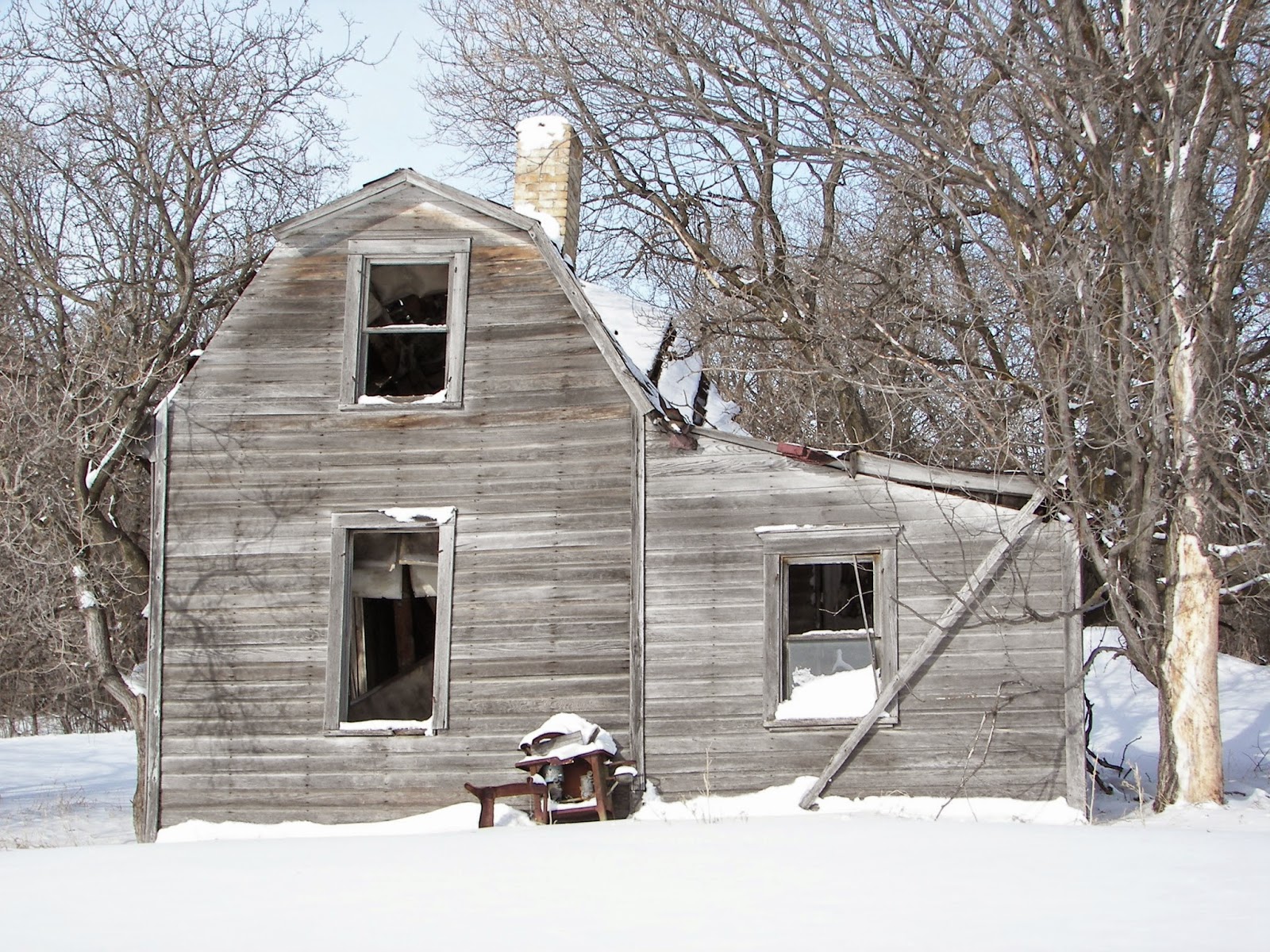The house sat forlornly on the edge of the riverbank woods at least a half mile from the nearest road. It had been built in the early 1900's so it was over fifty years old during my first visit. Erick was a farm laborer and worked mainly at farms in the area and at the same time tended his few acres. For a couple of the early years it seems he had his deaf sister living with him and they communicated by sign language.
The house was vacant when I first saw it and remained that way ever since. Uncle Eric and his sister died at least fifty years ago and the little house has faced time and weather alone and in silence ever since. With the farm field on one side and the river behind it, access to the site was difficult but it could be seen briefly through the trees from the high side of the river a half mile away.
During the period of time I have lived in the county I have watched many a house and barn demolished by so called progress. Many other died a slow death from a broken back caused by snow loads in winter. Others were burned and the remains buried. Recently I realized that Uncle Eric's place was not going to last much longer so I grabbed my camera and the snowshoes and headed out.
This river photo was taken near the road closest to the house which lies in the distant tree line on the farthest side of the field. The house sits in the trees to the left of the opening you can see in the woods on the sky line. The river swings wide to the left in a half circle and passes behind the house.
The snow was deep so the first challenge was to get down the steep river bank in the foreground and onto the frozen river. We had experienced a number of very cold nights before there was much snow on the ice so I was confident that the ice was thick and safe.
The second challenge after crossing the river was to get up the steep river bank on the far side. Once I was up the deep snow on the bank I passed through the old gate opening and started my trek to the distant house. My snowshoe track can just barely be seen to the left of the fallen tree seen in the photo. The nearest residence is at least a half mile away as the crow flies.
The close-up photo of the house shows it was a story and a half with a lean-to on the right hand side. The front door is missing along with the steps. Only one pane of glass remains unbroken. Notice it had a solid brick chimney. The old weather grey siding shows very little of what remains from the original coat of white paint.
The photo from the rear of the house indicates it was a small home and the winter snow loads over the course of many years has broken its back. The final collapse is only a winter or two away. (The following winter it gave up the fight and was crushed flat by snow.
The last pane of glass is doing its best to hold the snow back, but its too late. Even the trees around the house have died.
The trip back across the field and river bank was uneventful but the struggle up the river bank was a trial. Later I realized the effort was worthwhile when I learned the little old house was down.













